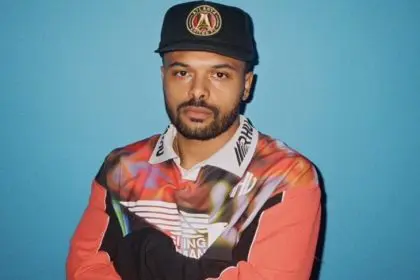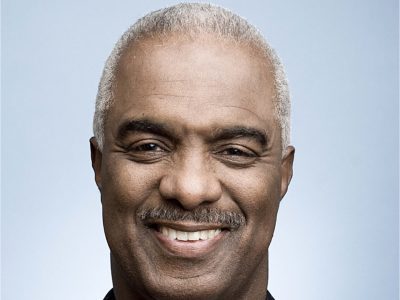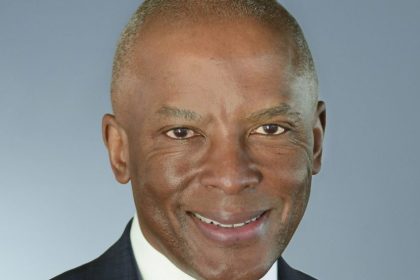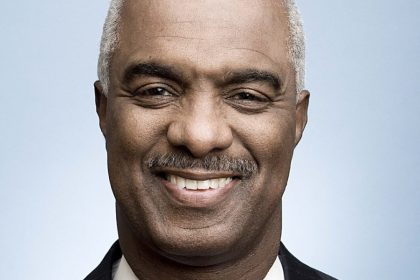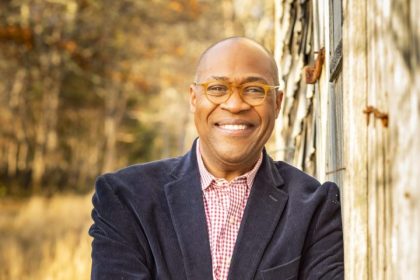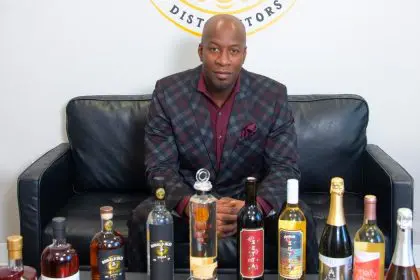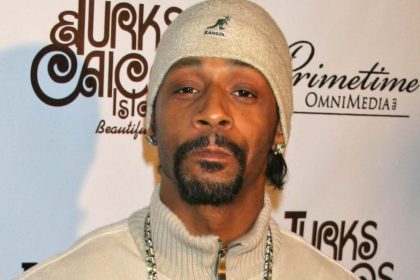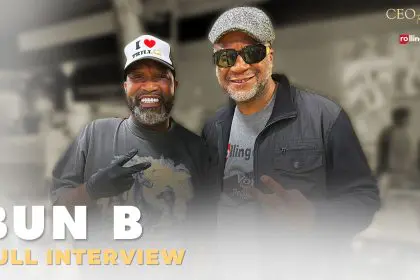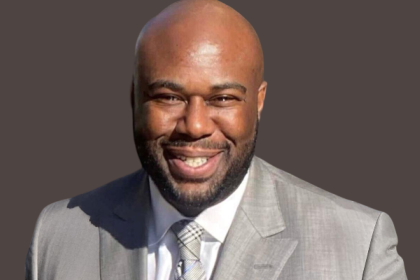
Dr. Derek Ham, the visionary director of Carnegie Mellon’s Entertainment Technology Center, is redefining the intersection of technology and cultural storytelling. With a distinguished academic background that includes a Ph.D. in Design Computation from MIT, a master’s in Architecture from Harvard, and a bachelor’s from Hampton University, Ham has established himself as a pioneering force in using virtual reality to preserve and celebrate African American history.
Through groundbreaking projects like “I Am A Man” and “Barnstormers: Determined to Win,” Ham demonstrates how emerging technologies can serve as powerful tools for empathetic storytelling. His approach combines technical innovation with cultural preservation, creating immersive experiences that not only document history but allow younger generations to connect with it in unprecedented ways. As barriers to entry in technology continue to lower, Ham advocates for diverse voices to shape these new digital narratives, ensuring that previously marginalized stories find their rightful place in our collective understanding.
When you think about your movement in design computation, how should young people be thinking about entering tech spaces like Carnegie Mellon or MIT?
The tech space is really broad. I think a lot of people sometimes see technology, emerging technology, and they just feel it’s super daunting or I got to have all these degrees. And what I love about how I approach technology and what I try to tell young people, is that never before has the floor ever been so low. Never before has the ceiling ever been so high. There are so many entry points of where you can come in to make media to make games to make various forms of entertainment.
And it’s just about connecting you to that right avenue to come in. But once you’re in, that’s where the innovation happens. It’s like making a game today or playing with AI to make a short video or to play with music.
We’re seeing a boom in creativity. And it’s a new thing. It’s a new space in a lot of ways. It’s that lowering that barrier to entry. And so this is the time to not be afraid. So, this is the time to jump on in. And it’s beautiful to see those who are early adopters trying to do that right now. But I’m like, jump on in the water. Come on.
You started with architecture. Why is it important for us to imagine ourselves in spaces of architectural design?
My first degree, I went to Hampton University, HBCU. Got a degree in architecture, and that was my first kind of place where I saw an intersection between creative arts and technical ways of thinking.
In a lot of ways that emergence of being able to think about beauty, aesthetics, form and movement, and then also understand that there’s some rules to it, there’s some math to it, there’s a science behind it, and where those things converge is where we see some of these emerging things. I left architecture and went to virtual reality because I saw something special about storytelling and being in a headset and telling stories that intersect between what you would call a game versus an interactive film and begin to work in those spaces.
But again, ultimately, we’re living in a unique time where we don’t have to be so siloed in our skill set. So, you can get that degree in architecture and see how it transfers over to another space. You could enter computer science and then start making games, start making movies. This is a time where we’re seeing a lot of collaboration across multiple disciplines. But again, just finding that entry point and staying focused is what I feel to get into that entry point and start making your moves.
Can you describe what’s happening at Carnegie Mellon’s Entertainment Technology Center?
As I’m talking about the way things converge and interdisciplinary people working across from different fields, 25 years ago, Carnegie Mellon created the entertainment technology center. And this came from a professor from computer science on one hand, another professor from the arts and from actually drama. And you think about those two, and you’re like, well, what do they have to do with each other? And a lot of college campuses would say what they have to do with each other. And at Carnegie Mellon there’s like, let’s take an experiment. Let’s put these camps together and see what emerges.
And when they created this and you started recruiting young artists with young people from computer science, you get the programmers and the artists on the same wavelength, singing the same song. New things started to happen, and we would see projects emerge in the gaming sector, new types of games, new ways to play games, location-based entertainment, things that we’re seeing in theme parks, things that are on the stage, heavily experimental work.
That’s now even today, we’re ushering and playing with AI and robotics on the entertainment lens. So you think about what we’re seeing in robotics? Yeah, we’re seeing it to optimize and work in warehouses. But I’m like, well, what happens when you put that robot on the stage? What happens when it’s a co-performer?
So, the ETC, Entertainment technology center is a playground for us to ask those types of strange questions that go beyond just the technical aspect of it. It’s the artistry of it. It’s the aesthetics of it. I would even dare say it’s the swagger of it to make these things come to life.
How should our community be thinking about robotics as a co-intelligence partner?
You can just sit back and look at the price point of what robot cost. Rather, they’re humanoid forms, or whether they’re small little things that roll around a kitchen floor. The cost of these things are dipping dramatically, and before we know it the cost of a humanoid robot will be cheaper than buying a vehicle. We’re almost there now. And so first of all, we can’t say, well, that’s just going to be for the rich and wealthy like this is something that we’re going to see in so many different spaces.
But not to be afraid not to look at this and say, oh, it’s gonna instantly take jobs away, or it’s gonna instantly do things. This is where we can ask, what new things can we create with it? What new experiences, what new affordances could we have in interacting and playing with it? And so I’m always focused on the new.
And I think that’s how we need to approach it. I think the spirit of entrepreneurship, the spirit of innovation, how we know how to take something, records weren’t meant to be scratched, yet we scratched them and made a new tune to them. So, when we talk about robots, what can they do to play and interact with them? We just got to get our hands on them, start hacking with them, playing with them, interacting with them, and not be afraid to approach it that way instead of what sometimes Hollywood approach of like they’re going to either take all our jobs or take over our lives.
And the other important thing is, I think, when you understand how these things are trained and the data systems that we use to input into them for how they move, how they interact. It’s really important for us to have a broad cultural diversity approach in the space. It’s like, who’s training these things. How do they move? How do they sing, how they dance, we have to make sure that we’re in the room.
So, there’s an understanding of a broader perspective of humanity that we’re teaching them basically to play and interact with us. And so that’s really important, I think, for people of color to be in the space to be upfront, the same things that we’ve always been saying about emerging technology.
Why should people be learning to use AI in all its capacities beyond just basic prompting?
What we have to understand is, start looking at the systems that exist to make and to interact. And that goes back to you mentioned that term design, computation, design, computation is really a step back to say any creative, any design, aspect has a system of rules and things that articulate the behavior. Now, once we automate that we talked about optimization, we talked about scaling things. Fundamentally, first, we have to start thinking in a way of the tool of the time if I had more time.
If more people could do this task, if I could optimize and just be reflective on your daily activities, like, what are the things that you do if you think like? Oh, if I had that optimized. And I had a partner tool to help do those thing, what would that look like and start thinking about? Optimization will then allow you to begin to see those pockets in those moments where oh, this would be great if I could intersect this in this and these things even go to like broader, wide world solutions, you start thinking about food waste. For instance, think about how much food we’re throwing out of kitchens, food after parties.
Wow! What would it be if we could optimize that? And food could be shared with people who didn’t have food? And we see this done on smaller scales. But that’s the first start the way we should start thinking about AI as a tool for optimization to allow us to do more, to analyze larger sets of data to do things bigger and broader than what we have human hours in a day.
I mean, once you start thinking like that, I think that light bulb starts to click on. And I’ve seen this with exercises with young kids in K12, just that simple prompt about optimization and scalability. You get crazy ideas and ways of thinking. Now, the idea to actually training those modules to do that. Yes, that’s the work that’s the labor. Maybe that inspires some young kid to go to school and work on that specific issue. But it’s an adaptive way of thinking about these things is the first way.
Many companies are offering “co-pilot” AI assistants. How should our community think about leveraging these co-technologies?
It’s about sharing knowledge and sharing information. I think there are a lot of companies that are betting on the lack of knowledge where they want to come in and swoop in and package it, and try to make you pay for it as a service. And there’s so many people are like, well, pause before you start shelling out money, and you just become a consumer. Understand it first, and understand like you could be building. We could find ways to build these things ourselves and be the person then collecting the fees.
So, it’s about slowing down and fully understanding before a bunch of middlemen start coming in asking you to pay their money to do these things. It’s, yes. It’s a holistic knowledge has to happen has to hit the communities have to start thinking, raising questions about optimization, understanding what data is. In the first place, understand things like privacy. That’s a whole other issue about before you click on that. Accept those terms. Quick, quick on your new tool like that literacy of understanding what you’re giving away and understanding like you could get that new thing and click beneath the text. No, do not take my data.
And so, part of this is literacy as well, just getting into the communities under getting people to understand what these things are, and just the broader terms of of how we approach these new changes.
What four things would you recommend to our community that might not be widely discussed on popular platforms?
Well, one thing I would start with, people have to remember a lot of these companies need you. You don’t need them like first start with that, even the whole. How do we get here? In the first place, they’ve been collecting your data for years. So first, understand as the power of a consumer, you have choice, and they need you. There’s a whole reason why they’re always like, would you mind if we look at your phone.
Would you mind if we collect this on the back end? They need you? And that would be the starting point. Understand your power, and as a consumer, that you’re not just at the mercy that you have some control, you have some say on it.
The second thing that I would say is really be open to what’s out there, and who the makers are before you adapt the next system that’s thrown at you because of advertisement. Dollars had said, this is the AI tool to use, or this is the thing, the tool. Do some homework. Some of even black owned companies, whether they’re game makers or new tool sets, maybe haven’t pushed up the marketing dollars. So that’s not the first thing that you see on your Tiktok, Instagram and stuff. So, we have to do some work to understand like, just because you see that ad that shouldn’t be the first thing you click on.
And then three. What I’m saying is like, start to understand some overarching concepts like, what is data? Start there, what does that mean people throw that out there, understand what data is, what types of data exist where they’re kept, who holds these things in a lot of ways, Munson. It’s like financial literacy, the way we’re starting to talk about tech and data. And it’s like there are people who just get a paycheck put in the bank spend and not understanding what’s happening in the background of the financial system in America.
That’s the same thing that we could say with data and tech and things are moving so fast. So, I have to slow down, start understanding some of the basic concepts who are the major players who owns things. Where is it? Where is it flowing? So those would be my high level, starting points that I would say, that’s where we need to be. That’s the roadmap that we could be on, and adapting our ways of thinking.
Tell us about your VR projects “I Am a Man” and “Barnstormers” and why they’re important.
When I first got in the VR game and wanted to start telling stories, I immediately gravitated towards, how do we use technology to keep black history alive. Yes, we want our kids to read. We want our kids to read books and understand history. And yes, there’s documentaries, but just kind of moving forward. I put on a VR headset, and I knew oh, this would be a powerful way to preserve history, to communicate and tell stories about history.
And so, the two projects that you’re mentioning the I’m a man project and the barnstormers is about Negro League baseball were both my early steps in saying, we want to experience black history, not knowing that we were entering to a time that where they want to pull down monuments where they want to pull out history and pull away from these rich narratives. More impassionate than ever to keep doubling down and tell black history through emerging technology.
And so, what we’re seeing with VR, and now augmented reality. To be able to tell a story like this put on a headset. You experience it from a first person perspective. What I find, what’s great about it is it helps.
The generations have conversations. I’ve seen younger kids come out of these experiences and want to go talk to grandma a little bit more about what that was like, because they have something that that is experiential. And it’s one to one versus just watching a movie or reading a book. They kind of lived it, if you will, just a little bit of the sense. I think it’s powerful for generational conversations. It’s powerful for keeping history alive.
And again, we have to keep fighting for our history to be kept preserved and told. And it’s amazing that in 2025, we’re still having these conversations about what the narrative is and who has the power to shape it.
How important is it for more people to take up space in augmented reality, and where should they lean in?
Right, and it may not be augmented, or VR for others. Some might be playing with a new AI tool. I think we need to start looking at our own past history as a form of intellectual property like own it. Talk about very boldly, negroly history, talk about civil rights, talk about black cowboys. Talk about black World War II heroes, like we have to grab those and then find playful ways using the tools today, whether you could use AI tools for animation. We have to start being reflective and telling our narratives.
Shaping it, forming it, but using the tools out today. So AR and VR. Are just two of the many onslaught of new platforms that are just prime for storytelling, and we need black storytellers to step up and to be bold to make things on these platforms, but we also need the consumers. We need the audiences. We need those who are being vocal to say, I want more. I want more of these things, because that then shows that pipeline of, we make stuff. Our community is fed, and now we are empowered to, then feed them more.
If you could preserve historical figures or civilizations and bring them to life through AI, what would you focus on?
Well, the first thing I will always say when we’re doing these experiences is remind people as real as they could feel visually and sensory. Let’s let’s always remember that this is still an interpretation and a copy. We can’t ever really go back in time, and so I never want to presume that the technology is so good that I could really make you feel a certain moment in time, one to one that there’s always going to be something lost. But if that being said and what it can do, I learned when I was working on the Negro League baseball project, the narrative was more than, oh, our history is about suffering and what we didn’t have.
And when you start looking at something like Negro League baseball, and you see, these guys were making big money satchel. Paige, Josh Gibson were making big money and they were superheroes, and they were the heroes of their community. And kids wanted to be them. That’s a different form of history other than a bunch of sad players who were just complained or were broken down and were not afforded the chance to be in the majors.
That’s the type of heroism. When we start looking at the kingdoms in Africa, you start looking at kings and princes and royalty of the systems that we have. There are so many aspects of history that have been masked and edited out where that is a game changer for the mindset for kids today.
And I’m speaking for the black community like our kids need to be able to look back and feel a sense of pride and a sense of achievement that, it wasn’t all just a road of slavery and suffering. That’s important. We need to preserve it and talk about how we overcame that. But there are these pocketed moments where you see amazing success. And that’s what I think. I like to focus on to really talk about what that meant for you to change your way your thinking about where you came from.
What message would you give to the next generation if you were giving commencement speeches at HBCUs?
I think about. And I would. As I’m thinking about this, I’m like, what would I tell to my younger self. That you should, I know this sounds cliche, but dream big like dream the dream that’s so scary that you’re like. I don’t know how I can do that. And that’s the dream you focus on, and the path there is not about hiding it. And it’s like I have this secret dream. It’s about sharing with it. It’s about talking with others, the people who will discredit you or laugh at you. It’s okay that might hurt. But you’re eventually going to find the people who say, Oh, that’s great! Oh, I have something to contribute to that.
Don’t dream in very safe spaces. Don’t dream in just the thing that you can see like really challenge yourself to have those big visions that are scary because you don’t know how on God’s earth you would ever achieve that. And those are the exciting dreams. And then begin that path. It goes back to the classic film heroes, the the hero’s journey, the schema that we see in a lot of films the hero’s journey. It’s like they wake up. Something’s different, and they start on this path.
Don’t stay in this safe mindset of. Yes, I know I could probably get that type of job, make that type of career do that type of work at least have one big, scary dream that the only way there is going to be through partnership, hard work, a constant pursuit for it. Dream that big dream.

